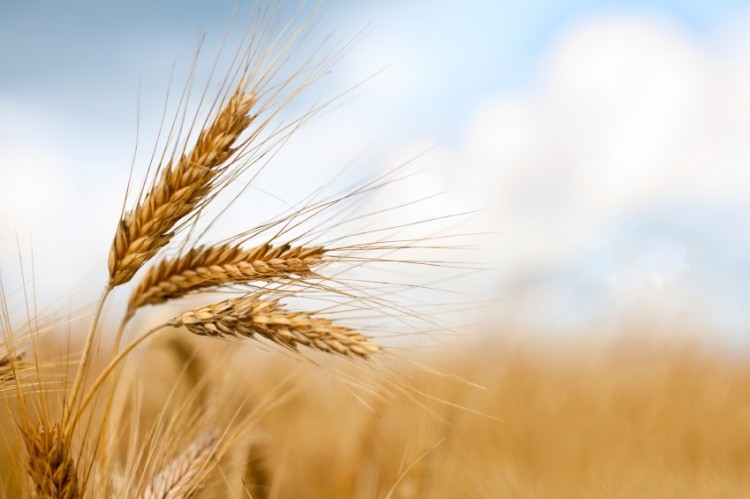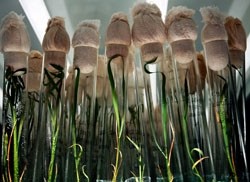Bite-size M&G science
Breeding for better sustainability, Chinese scientists warn against excessive nitrogen applications, mycotoxin diversity needs monitoring

Density-independent wheat cultivars essential for future sustainability
Ongoing climate change makes agricultural productivity less predictable, and variable patterns of rainfall jeopardize the successful cultivation of annual crops, leading to lower resource use efficiency in wheat, according to research published in the Annals of Applied Biology.
Drought-prone areas are particularly vulnerable to yield losses through lack of resources while changing climatic conditions make it difficult to estimate optimum plant populations to ensure sufficient yields.
Yield loss stems from the failure to predict and establish the most appropriate plant population so researchers have been investigating the affects of plant density on yields to identify optimal populations for sustained yields.
Results showed that poor performance at single-plant level is responsible for density-dependency, which in turn contributes to the gap between potential and actually attained yield.
Greater availability of density-independent cultivars will be ever more essential to counteract future challenges pertaining to wheat sustainability and food security, the researchers found.
Source: Annals of Applied Biology
Article first published online: 17 MAR 2014
DOI: 10.1111/aab.12121
“Addressing the yield by density interaction is a prerequisite to bridge the yield gap of rain-fed wheat”
Authors: I. S. Tokatlidis
Chinese growers advised to reduce N applications
Scientists in north-central China have been conducting experiments to analyze the affects of excessive nitrogen (N) fertilizer use on soil quality and crop production.
A wheat-maize rotation system was established from 2009-2012 to monitor the effects of high N levels on soil chemical properties and microbial, and evaluate soil sustainability under reduced N inputs.
Soil acidity decreased at 0-20cm as N levels rose while high rates of N fertilization also increased soil fungal activity compared to lower N rates.
The application of N at 180 and 210 kg N ha−1 during the wheat and maize seasons, respectively, resulted in sustained high yields and enhanced accumulated N recovery efficiency, but overall the results suggested high N inputs degraded soil quality and changed microbial community structure.
The scientists concluded that a 12.5–40% reduction in the farmers’ conventional N application rates was practical to reduce excess N input while maintaining the sustainability of the wheat–maize cropping system in the region.
Source: Agriculture, Ecosystems & Environment
Publishing date September 1, 2014
DOI: 10.1016/j.agee.2014.05.006
“Responses of soil properties, microbial community and crop yields to various rates of nitrogen fertilization in a wheat–maize cropping system in north-central China”
Authors: Shicheng Zhao, Shaojun Qiu, Caiyun Cao, Chunlian Zheng, Wei Zhou, Ping He
Evaluating the dynamics of mycotoxin production
Consumption of wheat around the world is increasing exponentially and as such there should be continuous monitoring of grains to better understand the dynamics of mycotoxin production, say scientists.
A team of Spanish researchers evaluated 27mycotoxins from Syria and Italy, where there has so far been little or no documented studies.
They analysed 40 Syrian and 46 Italian wheat grain samples, evaluating and comparing levels of aflatoxins, fumonisins, type A and B trichothecenes, ZEN, αZOL, OTA, STER and emerging mycotoxins, as well as their risks to human health.
Sixty-one wheat samples in total were contaminated with mycotoxins (71%) – 37 from Italy and 24 from Syria – although there were significant differences in occurrence and concentration between the two countries, suggesting climatic conditions play a significant role in mycotoxin production.
Syrian samples were predominately contaminated with ochratoxin A and aflatoxins and those from Italy with deoxynivalenol and 15-acetyldeoxynivalenol.
Concentrations of mycotoxins were largely below the maximum levels demanded by the European Union (EU), although one sample of ZEN in Italy did exceed EU recommendations.
The authors concluded that the presence of some mycotoxins at relative high levels in the wheat may pose a potential health risk and emphasized the need for ongoing monitoring programs.
Source: Food Chemistry
DOI: 10.1016/j.foodchem.2014.01.052
‘Natural co-occurrence of mycotoxins in wheat grains from Italy and Syria’
Authors: D.Alkadri, J.Rubert, A.Prodi, A.Pisi, J.Manes, C.Soler









